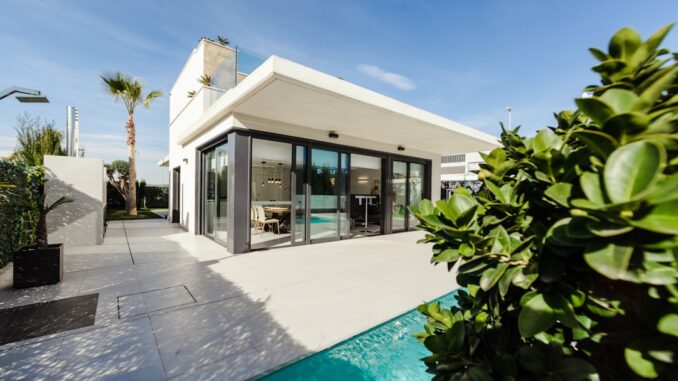
As a property developer embarking on a residential project, prioritizing energy efficiency isn’t just a trend—it’s a smart investment that pays off in the long run. An architect would likely advise you to focus on several key areas to ensure your building is both sustainable and cost-effective.
1. Optimize Building Orientation and Design
The way you position your building can significantly impact its energy performance. By aligning the structure to maximize natural light and heat from the sun, you can reduce reliance on artificial lighting and heating. For instance, placing living areas on the south side of the building allows for ample sunlight, while minimizing windows on the north side can prevent heat loss. (hefeldman.com)
2. Invest in High-Quality Insulation and Air Sealing
A well-insulated building envelope is crucial for maintaining a comfortable indoor environment and minimizing energy loss. Utilizing materials like spray foam or rigid panels in walls, roofs, and floors helps keep the desired temperature inside. Additionally, ensuring airtightness by sealing gaps around windows, doors, and other openings prevents drafts and reduces the workload on heating and cooling systems. (teamgreenarchitects.co.nz)
Successful low-energy building design hinges on careful planning. Focus360 Energy can help.
3. Choose Energy-Efficient Windows and Doors
Windows and doors are often responsible for significant energy loss in homes. Investing in energy-efficient options can make a substantial difference in your home’s overall energy performance. Opt for double or triple-paned windows with low-emissivity coatings to reduce heat transfer. Ensure proper sealing to prevent air leaks, and consider insulated doors to enhance thermal efficiency. (rosebuilding.com)
4. Select Sustainable Building Materials
The materials you choose for construction play a pivotal role in the building’s energy efficiency and environmental impact. Opt for eco-friendly materials like recycled steel, bamboo, or reclaimed wood, which not only reduce the carbon footprint but also often provide superior insulation properties. Additionally, using low-VOC paints and finishes contributes to better indoor air quality. (illustrarch.com)
5. Implement Energy-Efficient HVAC Systems
Heating, ventilation, and air conditioning systems are major energy consumers in residential buildings. Investing in high-efficiency HVAC systems with high SEER (Seasonal Energy Efficiency Ratio) and AFUE (Annual Fuel Utilization Efficiency) ratings can significantly reduce energy consumption. Properly sizing the system ensures optimal performance, and incorporating zoning and programmable thermostats allows for temperature control in different areas, further enhancing efficiency. (rosebuilding.com)
6. Incorporate Passive Solar Design
Passive solar design harnesses the sun’s energy for heating and lighting without relying on mechanical systems. By strategically placing windows, using thermal mass materials, and incorporating shading devices, you can naturally regulate indoor temperatures and reduce energy usage. For example, south-facing windows can capture heat during winter, while overhangs can block excessive sun in summer. (en.wikipedia.org)
7. Utilize Smart Home Technologies
Integrating smart technologies can enhance energy efficiency by allowing for better control and monitoring of energy usage. Smart thermostats, lighting systems, and energy monitoring devices enable adjustments based on occupancy and time of day, ensuring that energy is used only when needed. This not only conserves energy but also provides convenience and potential cost savings. (illustrarch.com)
8. Consider Renewable Energy Sources
Incorporating renewable energy systems like solar panels or wind turbines can offset energy consumption and reduce reliance on non-renewable resources. While the initial investment may be higher, the long-term benefits include lower utility bills and a smaller carbon footprint. Additionally, some regions offer incentives or tax credits for renewable energy installations, making it a financially viable option. (riograndecu.org)
9. Plan for Efficient Landscaping
Landscaping isn’t just about aesthetics; it can also contribute to energy efficiency. Strategic placement of trees and shrubs can provide shade, reducing cooling needs in the summer. Deciduous trees on the south side can block sun in summer and allow it in winter after shedding leaves. Additionally, using drought-resistant plants can reduce water usage and maintenance costs. (en.wikipedia.org)
10. Prioritize Water Efficiency
Water conservation is an often-overlooked aspect of energy efficiency. Installing low-flow fixtures, efficient irrigation systems, and using drought-tolerant landscaping can significantly reduce water usage. This not only conserves a precious resource but also reduces the energy required to pump, heat, and treat water. (riograndecu.org)
By focusing on these strategies, you can create residential buildings that are not only energy-efficient but also comfortable, sustainable, and appealing to environmentally conscious buyers. Remember, the upfront investment in energy-efficient design and materials often leads to substantial long-term savings and increased property value.
References


So, energy-efficient landscaping – not just for curb appeal, eh? I wonder if strategically placed shrubbery could also deter unwanted guests? Think of it as “eco-security.” Any plant recommendations for maximum privacy *and* energy savings?
That’s a fantastic point! “Eco-security” – I love that term! Thorny bushes beneath windows would definitely deter unwanted visitors, while also providing shade and potentially lowering energy costs. I’d recommend looking into Berberis or Pyracantha varieties for both security and visual appeal. Has anyone else tried using plants for security?
Editor: FocusNews.Uk
Thank you to our Sponsor Focus 360 Energy
The discussion on building orientation is fascinating. Does anyone have experience with specific software tools or simulation methods that accurately predict the impact of orientation on energy consumption before construction begins?
That’s a great question! The impact of building orientation can be tricky to predict without the right tools. I’ve heard of some architects using software like Sefaira or IES VE for energy modeling. They can simulate how different orientations will affect heating and cooling loads. Has anyone found these tools helpful in their projects?
Editor: FocusNews.Uk
Thank you to our Sponsor Focus 360 Energy